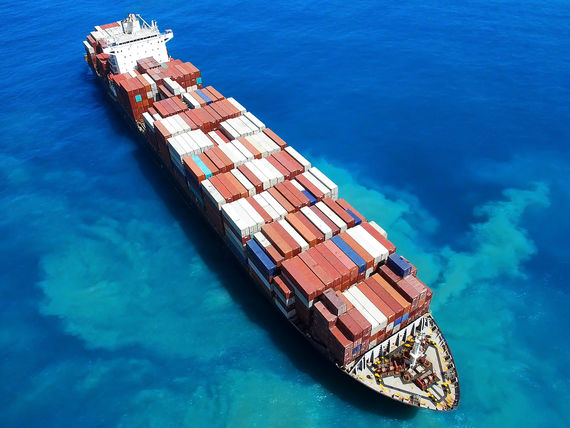Trendwatch: ILWU ratifies 6-year contract; Panama Canal’s low water delays could last 10 months impacting U.S. Gulf/East Coast ports; Global trade finance gap at record $2.5 trillion, says ADB

ILWU ratifies 6-year contract
The International Longshore and Warehouse Union voted to ratify a six-year contract agreement with the Pacific Maritime Association yesterday.
The union, which covers more than 22,000 longshore workers at 29 ports across the West Coast, voted 75% in favor to approve the tentative contract agreement that was reached in June.
PMA said in a statement the contract became retroactive on July 1, 2022 and will expire on July 1, 2028. The contract has also been approved by PMA member companies, including Maersk, CMA CGM, MSC, ONE and others.
Panama Canal’s low water delays could last 10 months impacting U.S. Gulf/East Coast ports
The Panama Canal’s drought induced low water problems are causing vessel traffic jams that could last for the next ten months according to the Athens-based shipbroker Intermodal.
In an exclusive interview with AJOT, Intermodal’s Research Analyst, Chara Georgousi reported that: “According to the Panama Canal Authority's latest update, water-saving measures will be in place for the next 10 months. The effects on supply chains could be further pronounced as the disruption will coincide with the peak holiday season when retailers increase shipping activities to accommodate the upcoming holiday consumer demand.”
While there is no immediate threat to container shipping to and from U.S. East and Gulf Coast ports, container shipping linking the ports to Asia rely on the Panama Canal. If low water conditions persist, the conditions “can have implications … they will be more long term rather near term, not so short term, because for the moment … they (container carriers) do not face immediate consequences ... They appear rather resilient….”
Global trade finance gap at record $2.5 trillion, says ADB
The global trade finance gap jumped to a record $2.5 trillion last year, as heightened economic risks left banks’ financing capacity stretched, according to the Asian Development Bank.
The trade finance gap — the difference between requests and approvals for financing to support imports and exports — grew by 47% from $1.7 trillion in 2020 on rising interest rates, flagging economic prospects, inflation, and geopolitical volatility, according to ADB’s 2023 Trade Finance Gaps, Growth, and Jobs Survey published Tuesday.
“That growing gap strangles the potential of trade to deliver critical human and economic development through jobs and growth,” said ADB’s Director General for Private Sector Operations Suzanne Gaboury in a statement. About 80% of trade depends on some form of financing, according to the ADB.
UAE, Brazil partnership aimed at boosting economic cooperation
The United Arab Emirates and Brazil announced they had entered into a partnership to share knowledge and expertise across several key economic sectors. The partnership was announced during a visit by a Brazilian delegation to the UAE, according to a September 3 statement from the UAE’s Ministry of Cabinet Affairs.
This comes as part of the UAE’s government experience exchange program, which was launched in 2018 and has led to partnerships with over 30 countries.
The UAE and Brazil will exchange information in areas of key economic policy and strategy, including competition, intellectual property, economic development, foreign trade and anti-money laundering practices. The countries already work together across several important industries such as transportation, shipping, construction, port management, mining, energy, banking and finance.
Port of New Orleans awarded $947,280 FEMA Port Security Grant
The Port of New Orleans was awarded $947,280 in recently announced Port Security Grant funding from the Federal Emergency Management Agency (FEMA) to support the expansion and enhancement of emergency services for Port NOLA’s maritime and industrial operations.
With this funding award, Port NOLA will invest in physical and technological upgrades to the Port’s Emergency Operations Center (EOC) which serves as home base during hurricanes and other significant incidents. Additionally, funds will be used to purchase drones and to enhance the Harbor Police Department’s surveillance network.
Last year the Port received $514,964 in Port Security Grant funding from FEMA to upgrade technology at the HPD’s Maritime Security Operations Center (MSOC), for a total of $1,462,244 in the past two years.
West Coast ports face hurdles winning back importers
West Coast ports have a new labor agreement in hand but they face big hurdles in their efforts to get U.S. importers to bring their supply chains fully back through the gateways.
New manufacturing strategies along with geopolitical tensions and China’s lagging economic growth are casting clouds over the ports that have long been a linchpin of the U.S. trade economy, even as the gateways from Southern California to Seattle trumpet an end to the labor uncertainty that helped push millions of import containers to other ports.
“A lot of [importers] have found benefits with East Coast and Gulf Coast ports,” said Jonathan Gold, vice president for supply chain at the National Retail Federation.
Gold said Gulf Coast and East Coast ports are gaining trade as retailers look to spread out their supply chains to be less reliant on one gateway. He said importers also like the proximity to growing manufacturing and population centers, especially in the Southeast, where retailers are investing in new facilities.
U.S. offering $12B to automakers and suppliers for advanced vehicles
U.S. Energy Secretary Jennifer Granholm announced August 31 that the Biden Administration would begin offering $12 billion in loans and grants to automakers and suppliers so that they can retrofit their facilities to produce EVs as well as other types of advanced vehicles.
"While we transition to EVs, we want to ensure that workers can transition in place. That there is no worker, no community left behind," Granholm, the former governor of Michigan, told reporters in a call.
About $2 billion in grants for advanced vehicles will come from the Inflation Reduction Act that was passed in 2022. Another $10 billion will be provided by the Energy Department’s Loans Program Office.


